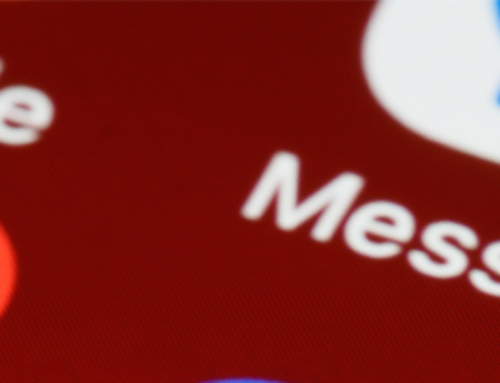New generation of productivity tools, examples and checklist
Bringing together new technologies and new methods for management has implications that go beyond the obvious and immediate. We will all certainly be bringing our own devices to work, accessing and contributing to work from a variety of platforms, and seeing our work take place across organisation boundaries with greater ease. We can look very specifically at how things will change across the tools we use, the way we communicate, how success is measured, and the structure of teams.
Tools will be quite different from those that grew up through the desktop PC era. At the highest level the implications about how tools are used are profound. New tools are being developed today—these are not “ports” of existing tools for mobile platforms, but ideas for new interpretations of tools or new combinations of technologies. In the classic definition of innovator’s dilemma, these new tools are less functional than the current state-of-the-art desktop tools. These new tools have features and capabilities that are either unavailable or suboptimal at an architectural level in today’s ubiquitous tools. It will be some time, if ever, before new tools have all the capabilities of existing tools. By now, this pattern of disruptive technologies is familiar (for example, digital cameras, online reading, online videos, digital music, etc.).
The user experience of this new generation of productivity tools takes on a number of attributes that contrast with existing tools, including:
- Continuous v. episodic. Historically work took place in peaks and valleys. Rough drafts created, then circulated, then distributed after much fanfare (and often watering down). The inability to stay in contact led to a rhythm that was based on high-cost meetings taking place at infrequent times, often requiring significant devotion of time to catching up. Continuously productive tools keep teams connected through the whole process of creation and sharing. This is not just the use of adjunct tools like email (and endless attachments) or change tracking used by a small number of specialists, but deep and instant collaboration, real-time editing, and a view that information is never perfect or done being assembled.
- Online and shared information. The old world of creating information was based on deliberate sharing at points in time. Heavyweight sharing of attachments led to a world where each of us became “merge points” for work. We worked independently in silos hoping not to step on each other never sure where the true document of record might be or even who had permission to see a document. New tools are online all the time and by default. By default information can be shared and everyone is up to date all the time.
- Capture and continue The episodic nature of work products along with the general pace of organizations created an environment where the “final” output carried with it significant meaning (to some). Yet how often do meetings take place where the presenter apologizes for data that is out of date relative to the image of a spreadsheet or org chart embedded in a presentation or memo? Working continuously means capturing information quickly and in real-time then moving on. There are very few end points or final documents. Working with customers and partners is a continuous process and the information is continuous as well.
- Low startup costs. Implementing a new system used to be a time consuming and elaborate process viewed as a multi-year investment and deployment project. Tools came to define the work process and more critically make it impossibly difficult to change the work process. New tools are experienced the same way we experience everything on the Internet—we visit a site or download an app and give it a try. The cost to starting up is a low-cost subscription or even a trial. Over time more features can be purchased (more controls, more depth), but the key is the very low-cost to begin to try out a new way to work. Work needs change as market dynamics change and the era of tools preventing change is over.
- Sharing inside and outside. We are all familiar with the challenges of sharing information beyond corporate boundaries. Management and IT are, rightfully, protective of assets. Individuals struggle with the basics of getting files through firewalls and email guards. The results are solutions today that few are happy with. Tools are rapidly evolving to use real identities to enable sharing when needed and cross-organization connections as desired. Failing to adopt these approaches, IT will be left watching assets leak out and workarounds continue unabated.
- Measured enterprise integration. The PC era came to be defined at first by empowerment as leading edge technology adopters brought PCs to the workplace. The mayhem this created was then controlled by IT that became responsible to keep PCs running, information and networks secure, and enforce consistency in organizations for the sake of sharing and collaboration. Many might (perhaps wrongly) conclude that the consumerization wave defined here means IT has no role in these tasks. Rather the new era is defined by a measured approach to IT control and integration. Tools for identity and device management will come to define how IT integrates and controls—customization or picking and choosing code are neither likely nor scalable across the plethora of devices and platforms that will be used by people to participate in work processes. The net is to control enterprise information flow, not enterprise information endpoints.
- Mobile first. An example of a transition between the old and new, many see the ability to view email attachments on mobile devices as a way forward. However, new tools imply this is a true bridge solution as mobility will come to trump most everything for a broad set of people. Deep design for architects, spreadsheets for analysts, or computation for engineers are examples that will likely be stationary or at least require unique computing capabilities for some time. We will all likely be surprised by the pace at which even these “power” scenarios transition in part to mobile. The value of being able to make progress while close to the site, the client, or the problem will become a huge asset for those that approach their professions that way.
- Devices in many sizes. Until there is a radical transformation of user-machine interaction (input, display), it is likely almost all of us will continue to routinely use devices of several sizes and those sizes will tend to gravitate towards different scenarios (see http://blog.flurry.com/bid/99859/The-Who-What-and-When-of-iPhone-and-iPad-Usage), though commonality in the platforms will allow for overlap. This overlap will continue to be debated as “compromise” by some. It is certain we will all have a device that we carry and use almost all the time, the “phone”. A larger screen device will continue to better serve many scenarios or just provide a larger screen area upon which to operate. Some will find a small tablet size meeting their needs almost all of the time. Others will prefer a larger tablet, perhaps with a keyboard. It is likely we will see somewhat larger tablets arise as people look to use modern operating systems as full-time replacements for existing computing devices. The implications are that tools will be designed for different device sizes and input modalities.
It is worth considering a few examples of these tools. As an illustration, the following lists tools in a few generalized categories of work processes. New tools are appearing almost every week as the opportunity for innovation in the productivity space is at a unique inflection point. These examples are just a few tools that I’ve personally had a chance to experience—I suspect (and hope) that many will want to expand these categories and suggest additional tools (or use this as a springboard for a dialog!)
- Creation. Quip, Evernote, Paper, Haiku Deck, Lucidchart
- Storage and Sharing. Box, Dropbox, Hightail
- Reporting. Mixpanel, Quantifind
- Communications. WhatsApp, Anchor, Voxer
- Tracking. Asana, Todoist, Relaborate
- Training. Udacity, Thinkful, Codeacademy
The architecture and implementation of continuous productivity tools will also be quite different from the architecture of existing tools. This starts by targeting a new generation of platforms,sealed-case platforms.
The PC era was defined by a level of openness in architecture that created the opportunity for innovation and creativity that led to the amazing revolution we all benefit from today. An unintended side-effect of that openness was the inherent unreliability over time, security challenges, and general futzing that have come to define the experience many lament. The new generation of sealed case platforms—that is hardware, software, and services that have different points of openness, relative to previous norms in computing, provide for an experience that is more reliable over time, more secure and predictable, and less time-consuming to own and use. The tradeoff seems dramatic (or draconian) to those versed in old platforms where tweaking and customizing came to dominate. In practice the movement up the stack, so to speak, of the platform will free up enormous amounts of IT budget and resources to allow a much broader focus on the business. In addition, choice, flexibility, simplicity in use, and ease of using multiple devices, along with a relative lack of futzing will come to define this new computing experience for individuals.
The sealed case platforms include iOS, Android, Chromebooks, Windows RT, and others. These platforms are defined by characteristics such as minimizing APIs that manipulate the OS itself, APIs that enforce lower power utilization (defined background execution), cross-application security (sandboxing), relative assurances that apps do what they say they will do (permissions, App Stores), defined semantics for exchanging data between applications, and enforced access to both user data and app state data. These platforms are all relatively new and the “rules” for just how sealed a platform might be and how this level of control will evolve are still being written by vendors. In addition, devices themselves demonstrate the ideals of sealed case by restricting the attachment of peripherals and reducing the reliance on kernel mode software written outside the OS itself. For many this evolution is as controversial as the transition automobiles made from “user-serviceable” to electronic controlled engines, but the benefits to the humans using the devices are clear.
Building on the sealed case platform, a new generation of applications will exhibit a significant number of the following attributes at the architecture and implementation level. As with all transitions, debates will rage over the relative strength or priority of one or more attributes for an app or scenario (“is something truly cloud” or historically “is this a native GUI”). Over time, if history is any guide, the preferred tools will exhibit these and other attributes as a first or native priority, and de-prioritize the checklists that characterized the “best of” apps for the previous era.
The following is a checklist of attributes of tools for continuous productivity:
- Mobile first. Information will be accessed and actions will be performed mobile first for a vast majority of both employees and customers. Mobile first is about native apps, which is likely to create a set of choices for developers as they balance different platforms and different form factors.
- Cloud first. Information we create will be stored first in the cloud, and when needed (or possible) will sync back to devices. The days of all of us focusing on the tasks of file management and thinking about physical storage have been replaced by essentially unlimited cloud storage. With cloud-storage comes multi-device access and instant collaboration that spans networks. Search becomes an integral part of the user-experience along with labels and meta-data, rather than physical hierarchy presenting only a single dimension. Export to broadly used interchange formats and printing remain as critical and archival steps, but not the primary way we share and collaborate.
- User experience is platform native or browser exploitive. Supporting mobile apps is a decision to fully use and integrate with a mobile platform. While using a browser can and will be a choice for some, even then it will become increasingly important to exploit the features unique to a browser. In all cases, the usage within a customer’s chosen environment encourages the full range of support for that platform environment.
- Service is the product, product is the service. Whether an internal IT or a consumer facing offering, there is no distinction where a product ends and a continuously operated and improving service begins. This means that the operational view of a product is of paramount importance to the product itself and it means that almost every physical product can be improved by a software service element.
- Tools are discrete, loosely coupled, limited surface area. The tools used will span platforms and form factors. When used this way, monolithic tools that require complex interactions will fall out of favor relative to tools more focused in their functionality. Doing a smaller set of things with focus and alacrity will provide more utility, especially when these tools can be easily connected through standard data types or intermediate services such as sharing, storage, and identity.
- Data contributed is data extractable. Data that you add to a service as an end-user is easily extracted for further use and sharing. A corollary to this is that data will be used more if it can also be extracted a shared. Putting barriers in place to share data will drive the usage of the data (and tool) lower.
- Metadata is as important as data. In mobile scenarios the need to search and isolate information with a smaller user interface surface area and fewer “keystrokes” means that tools for organization become even more important. The use of metadata implicit in the data, from location to author to extracted information from a directory of people will become increasingly important to mobile usage scenarios.
- Files move from something you manage to something you use when needed.Files (and by corollary mailboxes) will simply become tools and not obsessions. We’re all seeing the advances in unlimited storage along with accurate search change the way we use mailboxes. The same will happen with files. In addition, the isolation and contract-based sharing that defines sealed platforms will alter the semantic level at which we deal with information. The days of spending countless hours creating and managing hierarchies and physical storage structures are over—unlimited storage, device replication, and search make for far better alternatives.
- Identity is a choice. Use of services, particularly consumer facing services, requires flexibility in identity. Being able to use company credentials and/or company sign-on should be a choice but not a requirement. This is especially true when considering use of tools that enable cross-organization collaboration. Inviting people to participate in the process should be as simple as sending them mail today.
- User experience has a memory and is aware and predictive. People expect their interactions with services to be smart—to remember choices, learn preferences, and predict what comes next. As an example, location-based services are not restricted to just maps or specific services, but broadly to all mobile interactions where the value of location can improve the overall experience.
- Telemetry is essential / privacy redefined. Usage is what drives incremental product improvements along with the ability to deliver a continuously improving product/service. This usage will be measured by anonymous, private, opt-in telemetry. In addition, all of our experiences will improve because the experience will be tailored to our usage. This implies a new level of trust with regard to the vendors we all use. Privacy will no doubt undergo (or already has undergone) definitional changes as we become either comfortable or informed with respect to the opportunities for better products.
- Participation is a feature. Nearly every service benefits from participation by those relevant to the work at hand. New tools will not just enable, but encourage collaboration and communication in real-time and connected to the work products. Working in one place (document editor) and participating in another (email inbox) has generally been suboptimal and now we have alternatives. Participation is a feature of creating a work product and ideally seamless.
- Business communication becomes indistinguishable from social. The history of business communication having a distinct protocol from social goes back at least to learning the difference between a business letter and a friendly letter in typing class. Today we use casual tools like SMS for business communication and while we will certainly be more respectful and clear with customers, clients, and superiors, the reality is the immediacy of tools that enable continuous productivity will also create a new set of norms for business communication. We will also see the ability to do business communication from any device at any time and social/personal communication on that same device drive a convergence of communication styles.
- Enterprise usage and control does not make things worse. In order for enterprises to manage and protect the intellectual property that defines the enterprise and the contribution employees make to the enterprise IP, data will need to be managed. This is distinctly different from managing tools—the days of trying to prevent or manage information leaks by controlling the tools themselves are likely behind us. People have too many choices and will simply choose tools (often against policy and budgets) that provide for frictionless work with coworkers, partners, customers, and vendors. The new generation of tools will enable the protection and management of information that does not make using tools worse or cause people to seek available alternatives. The best tools will seamlessly integrate with enterprise identity while maintaining the consumerization attributes we all love.





